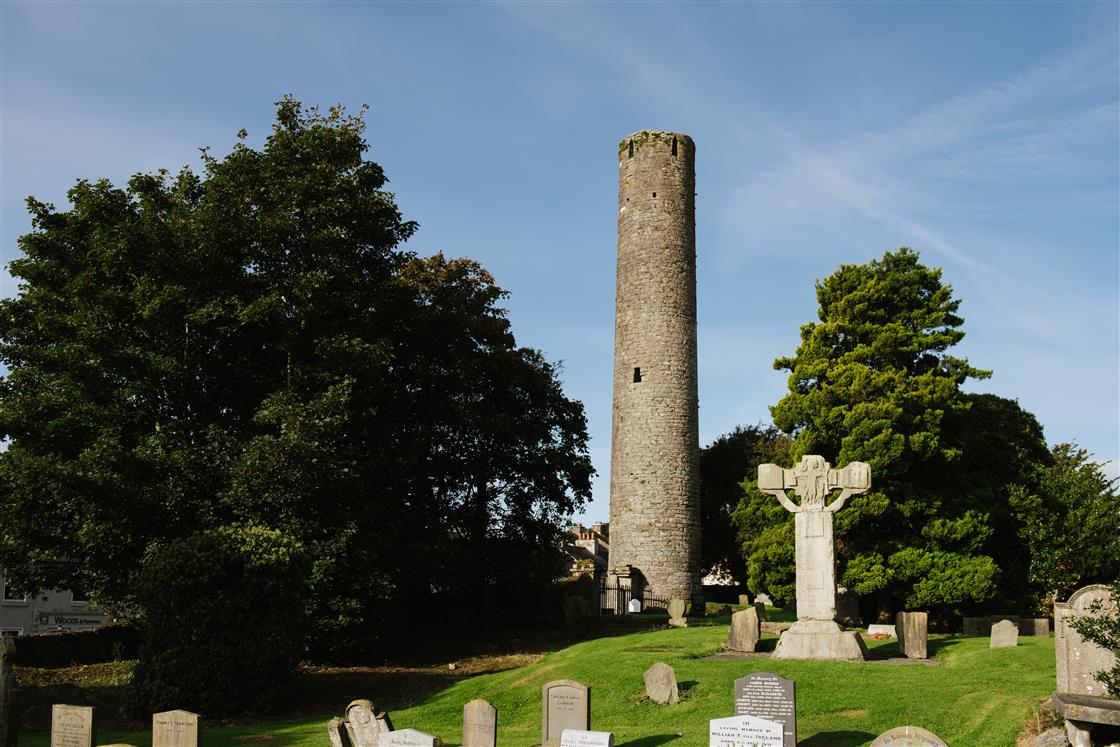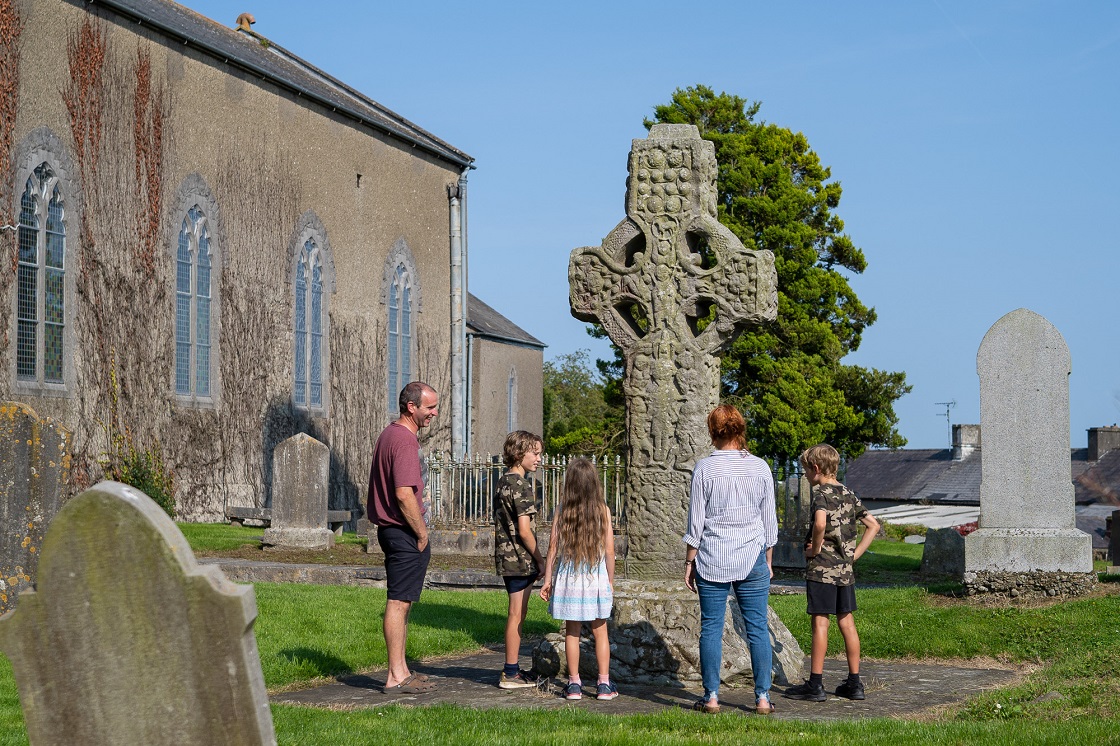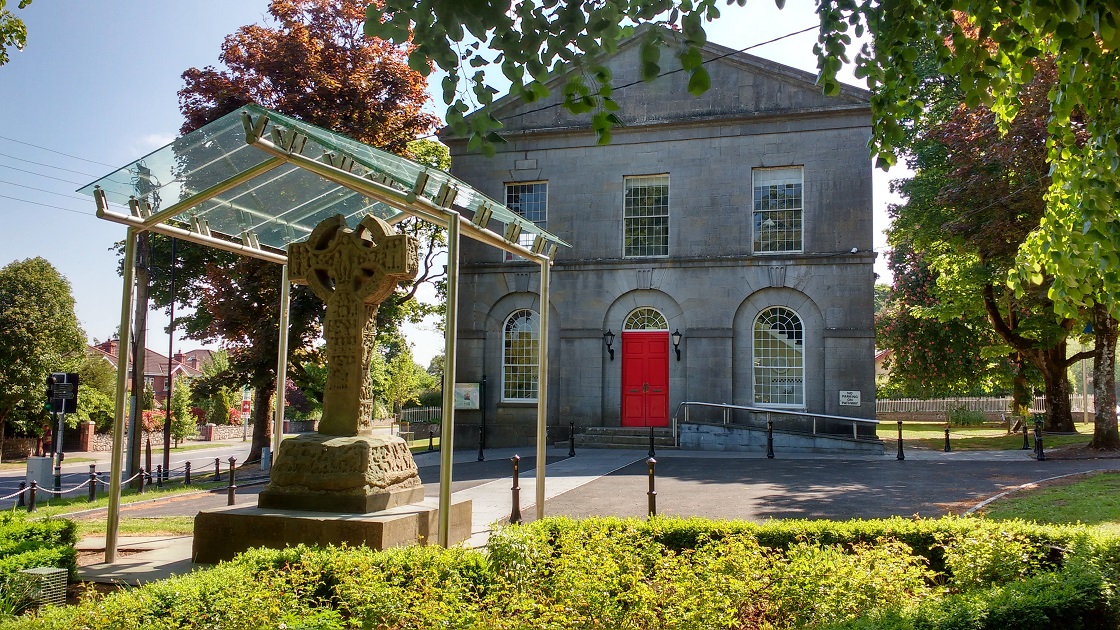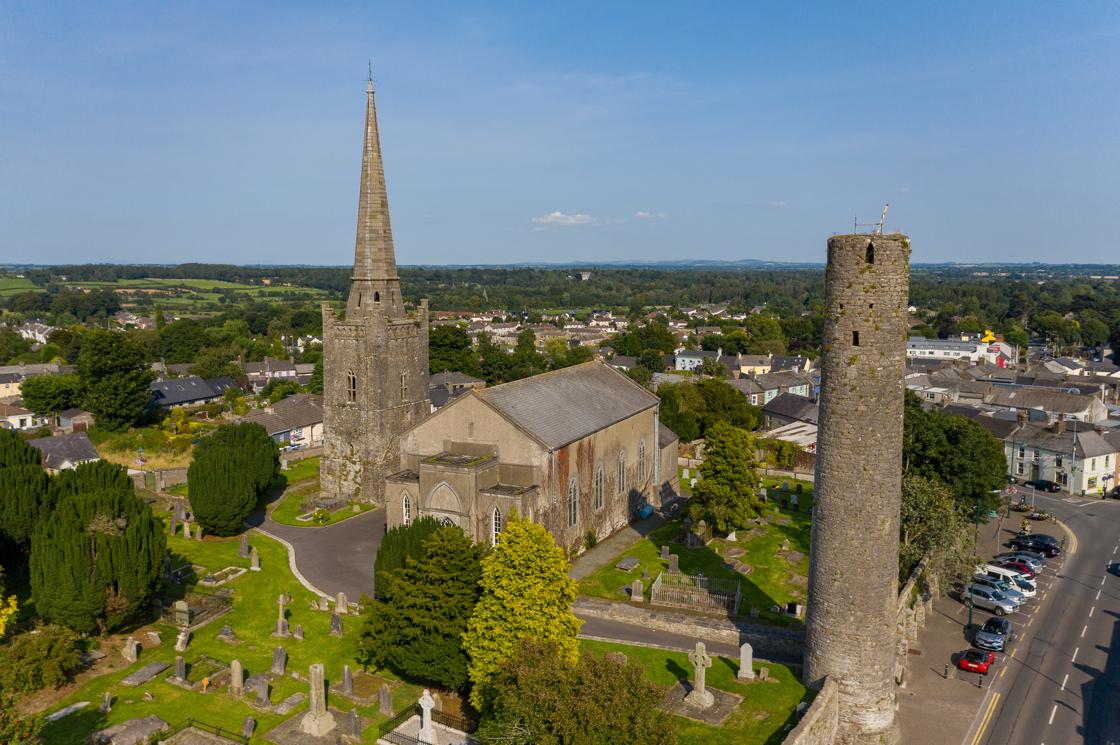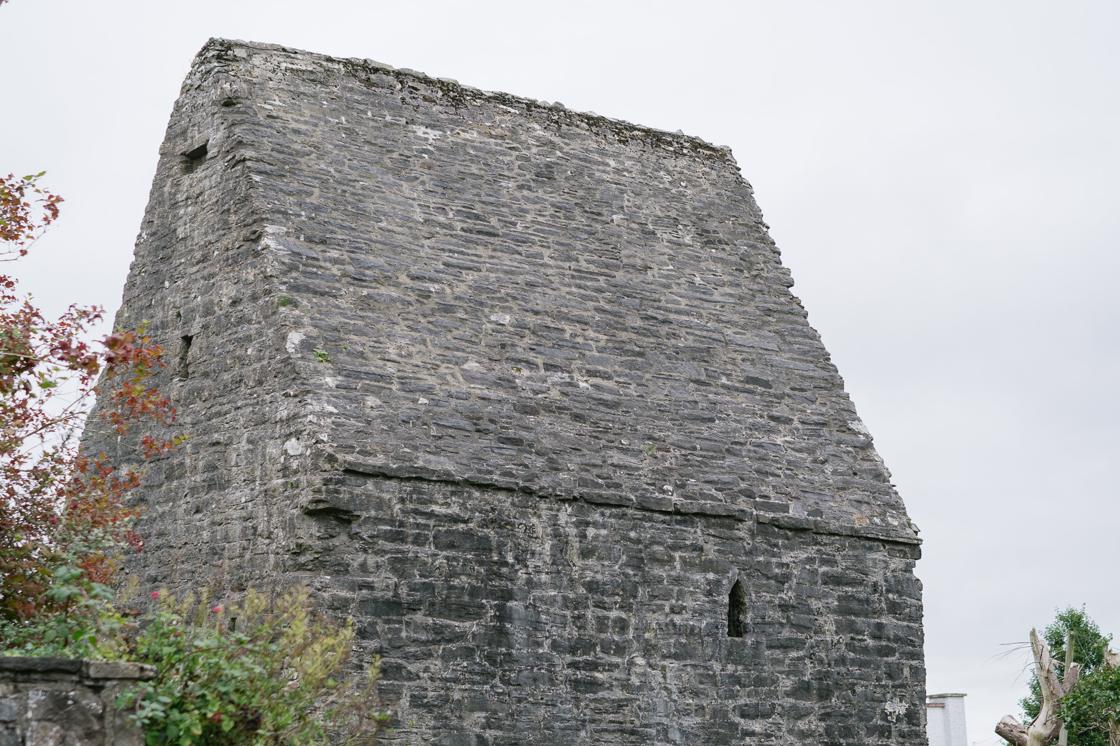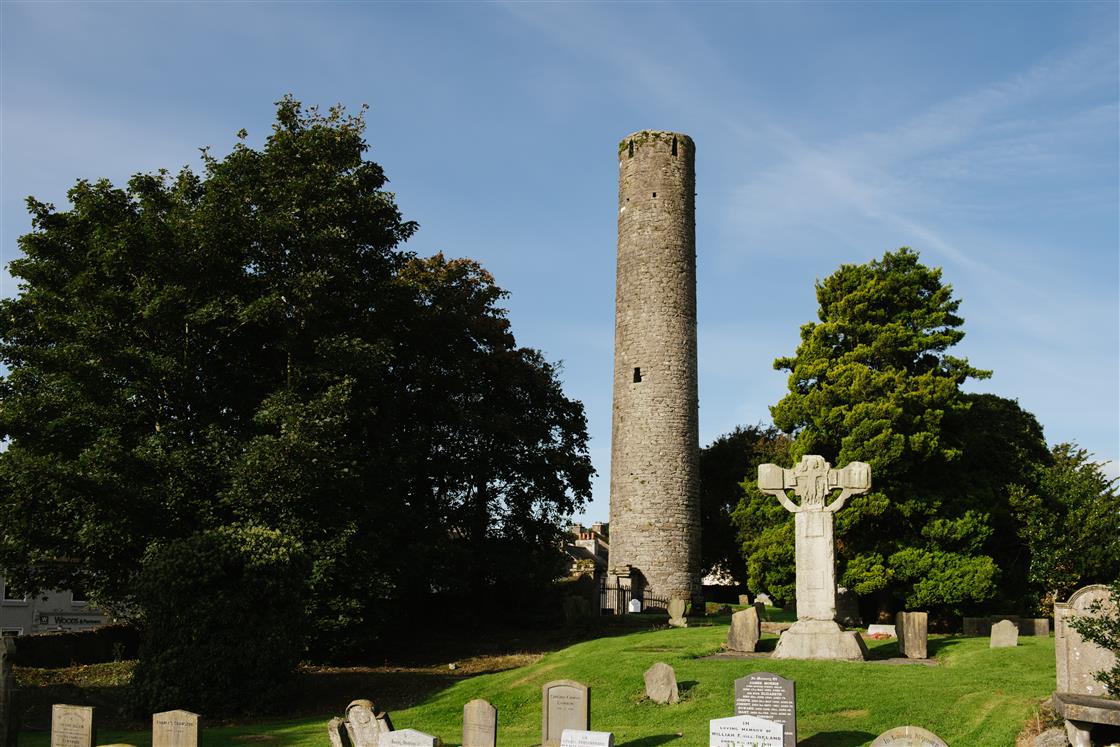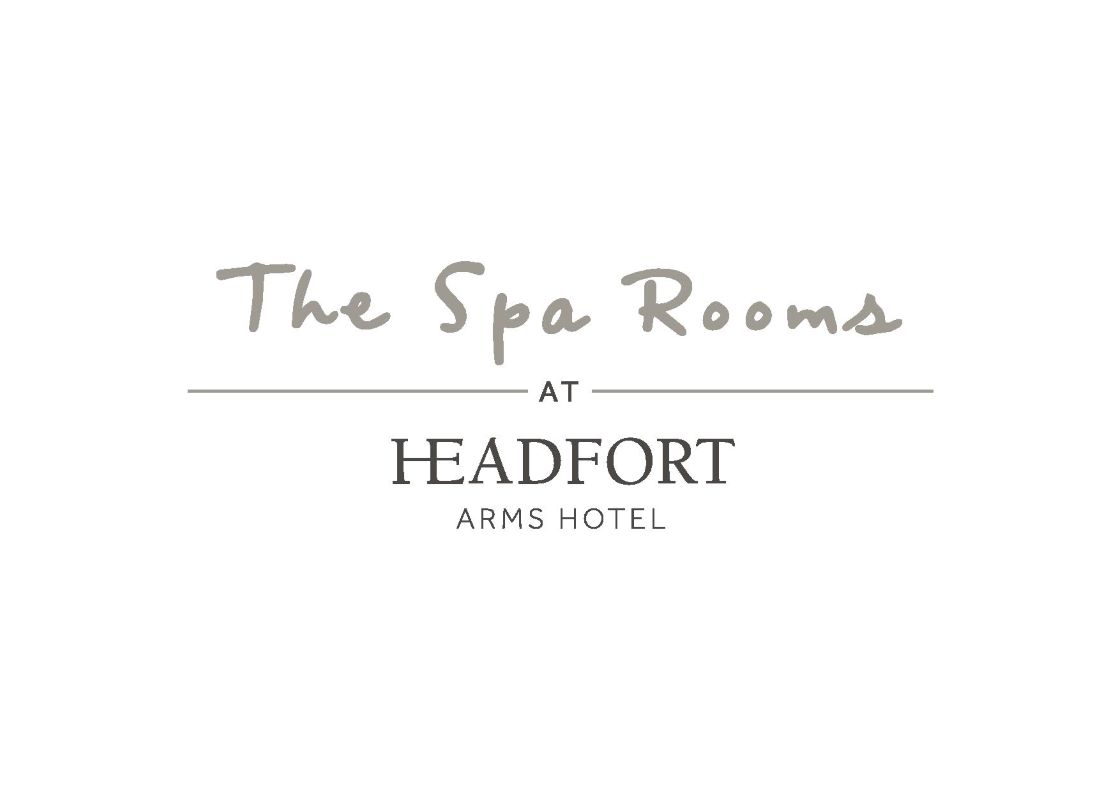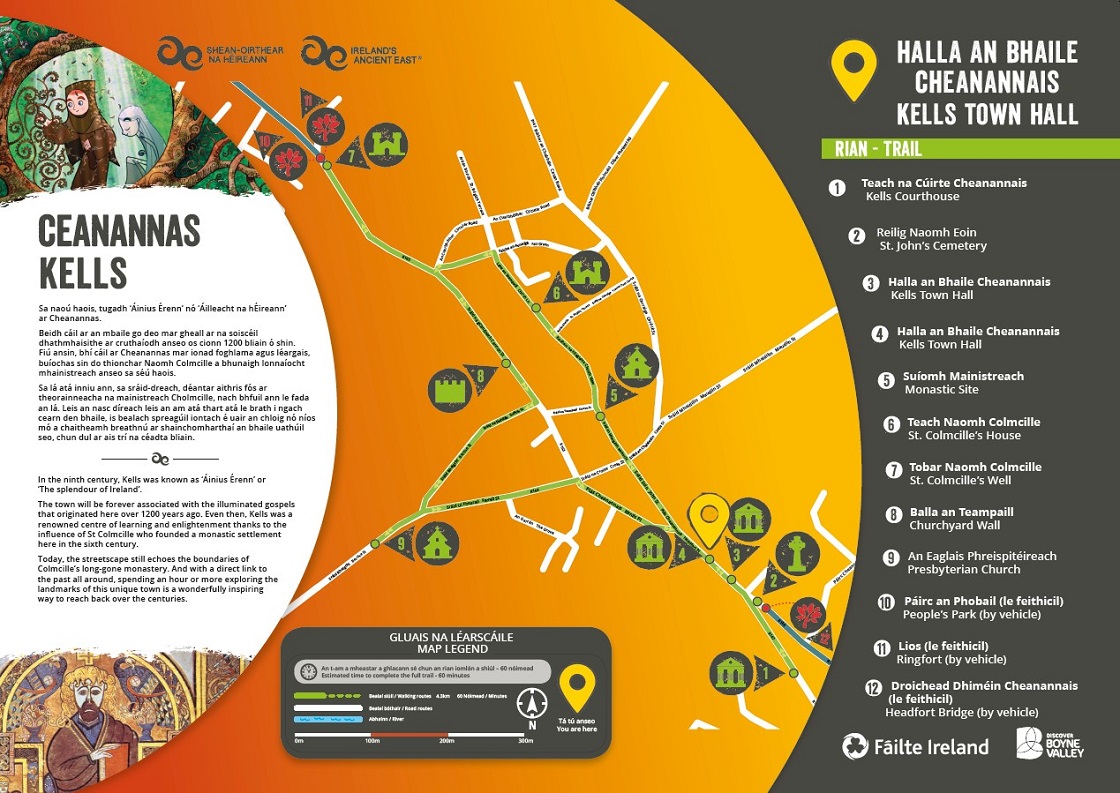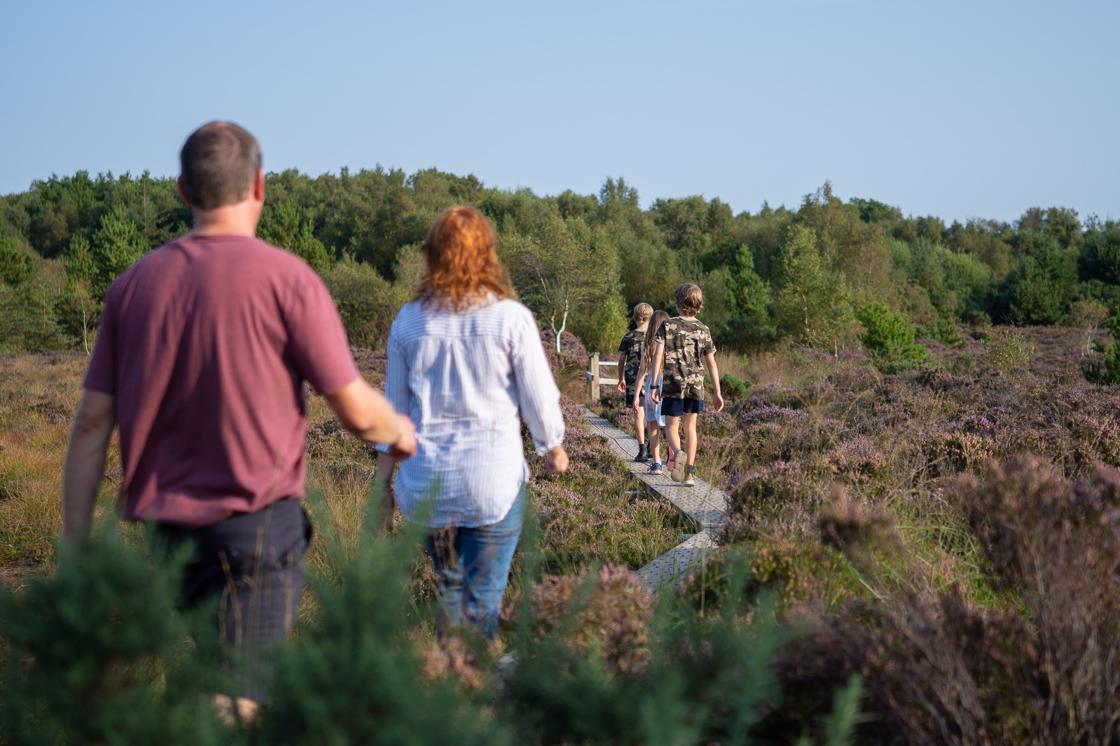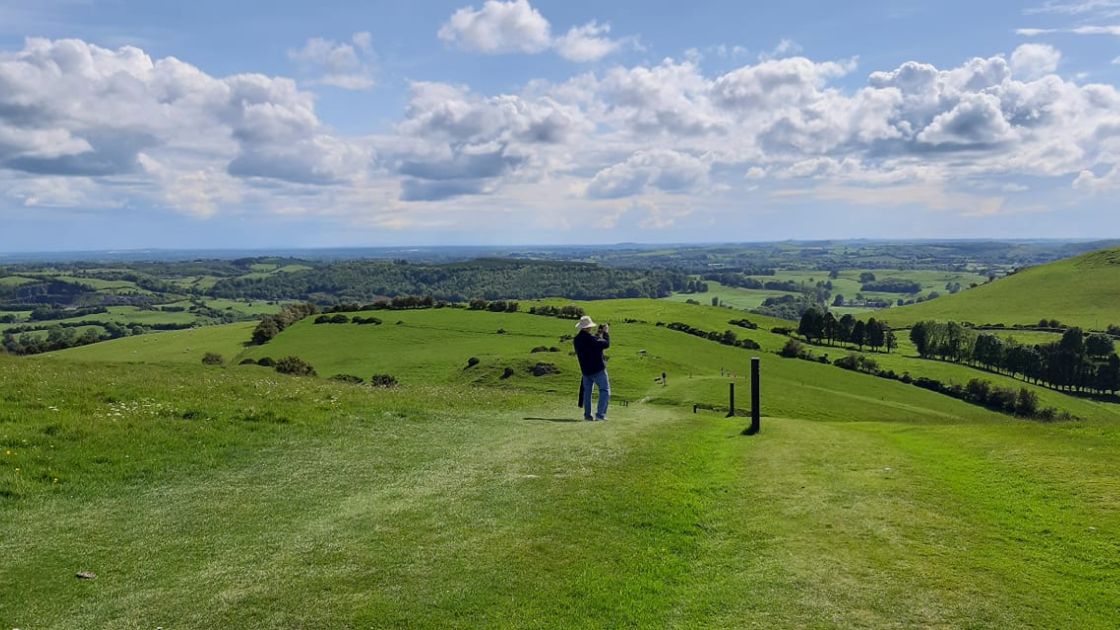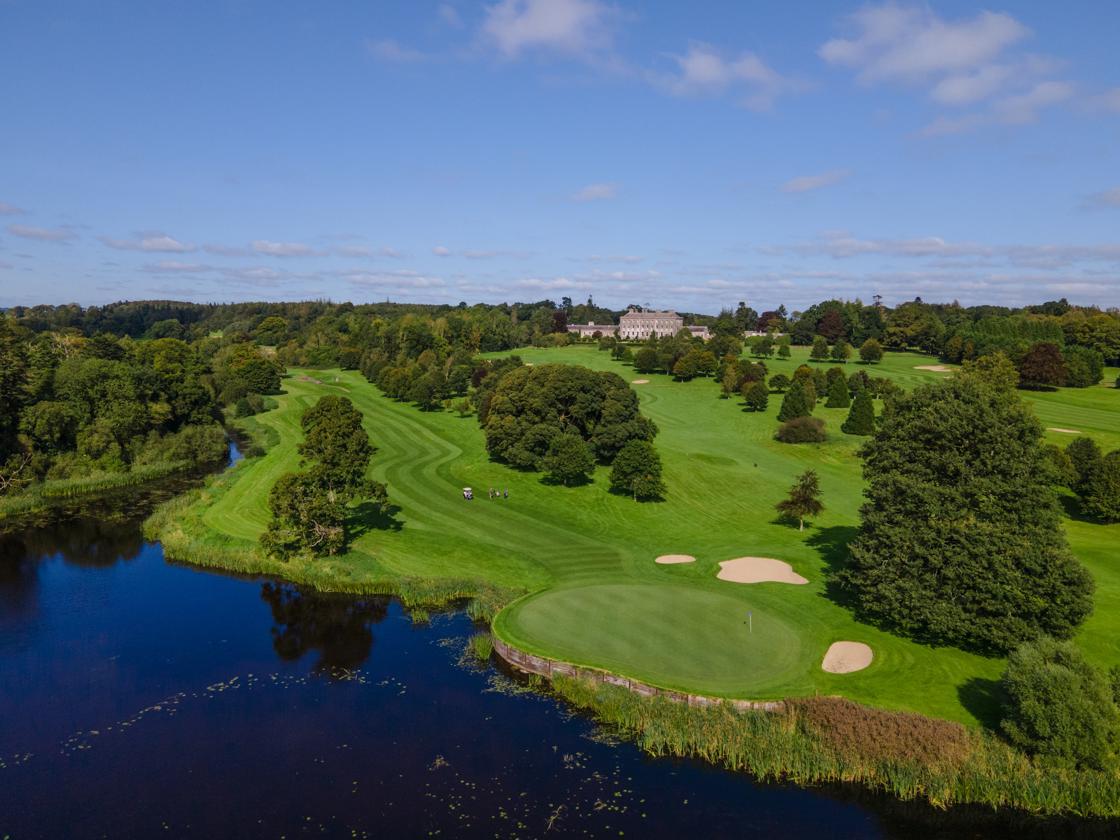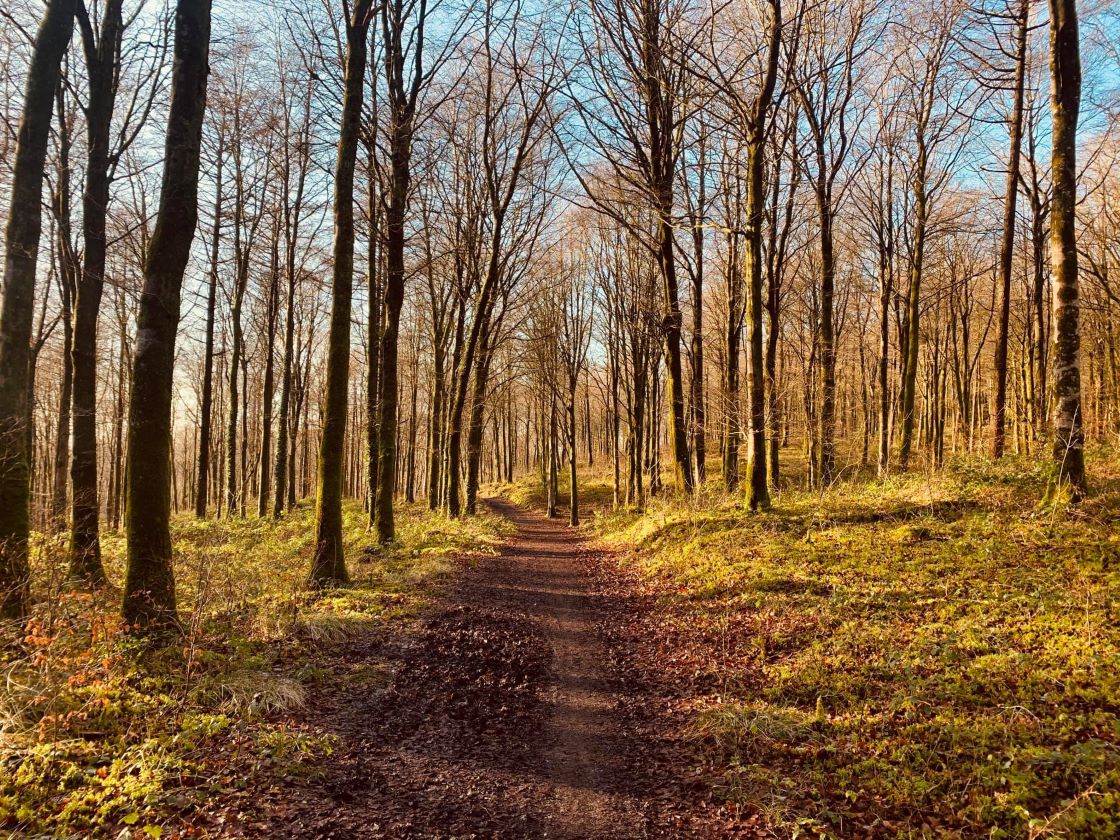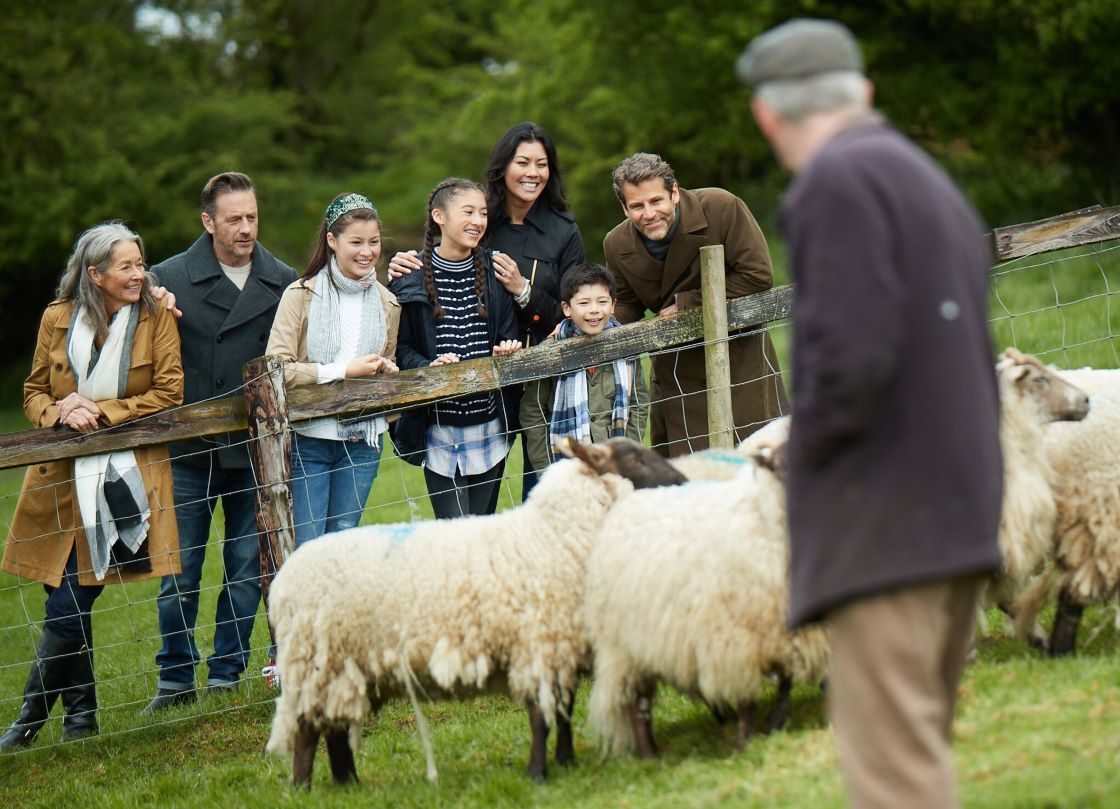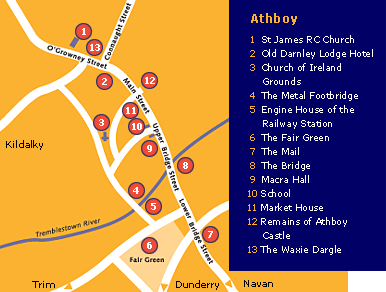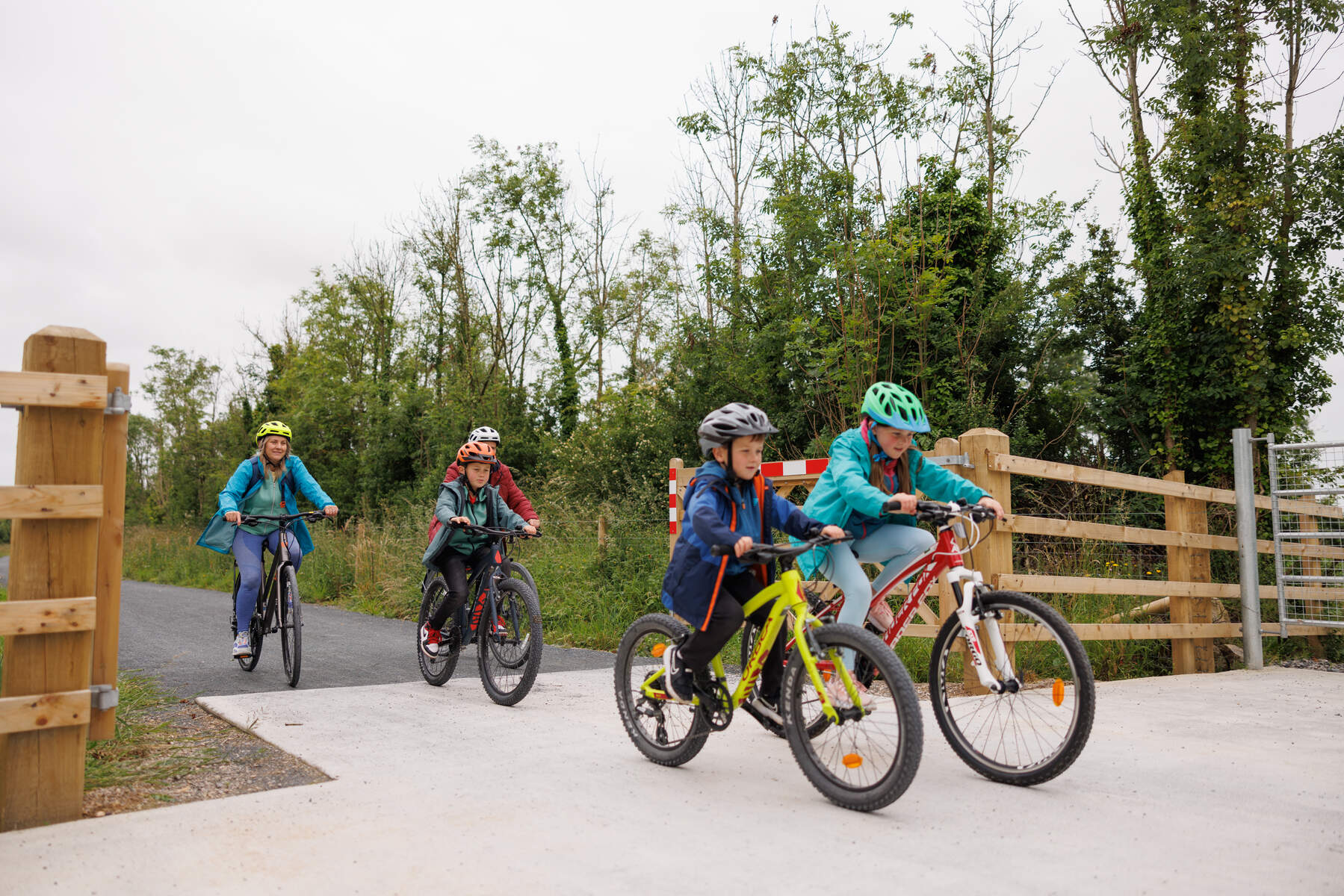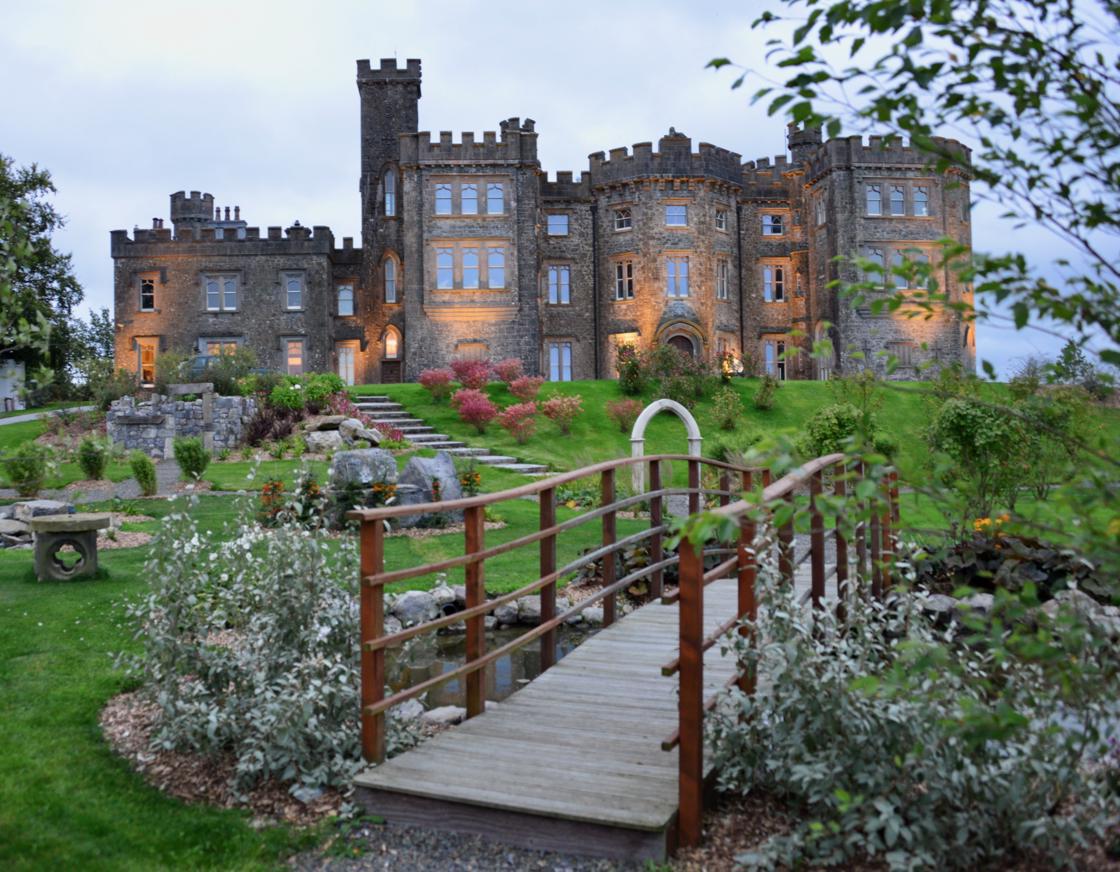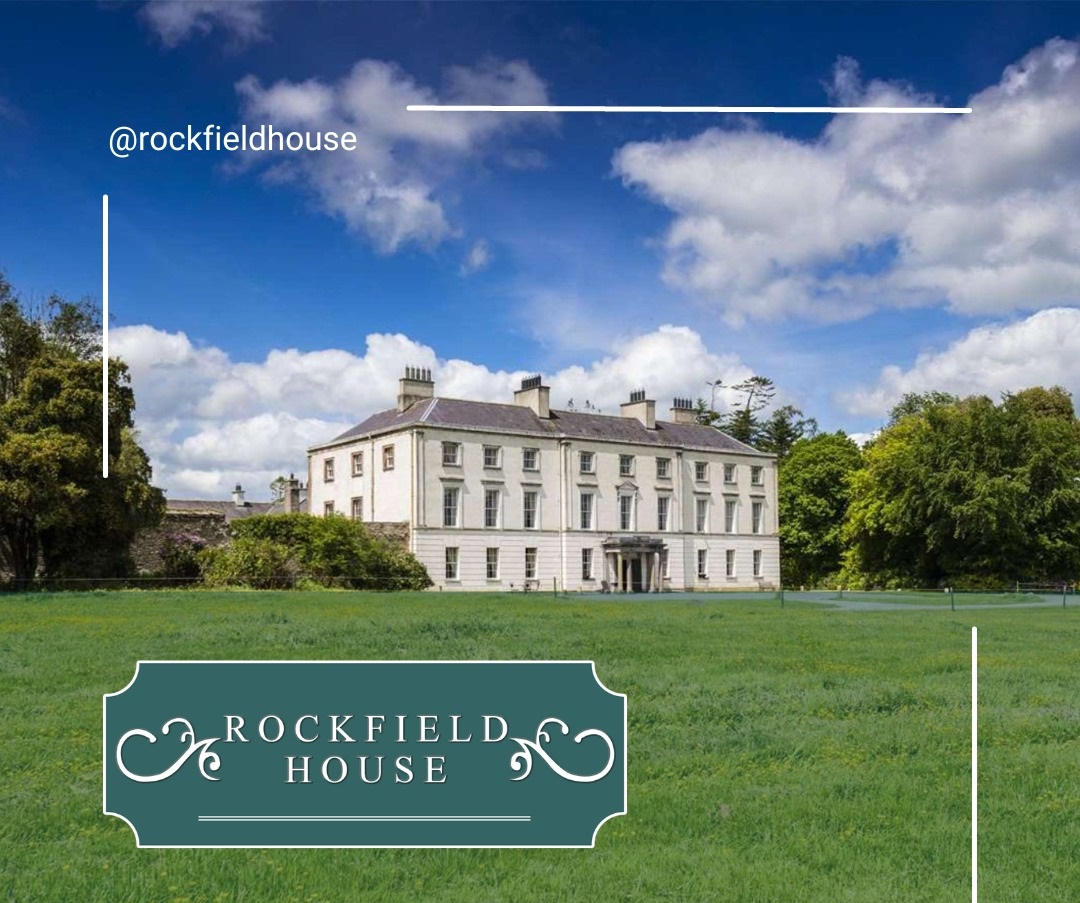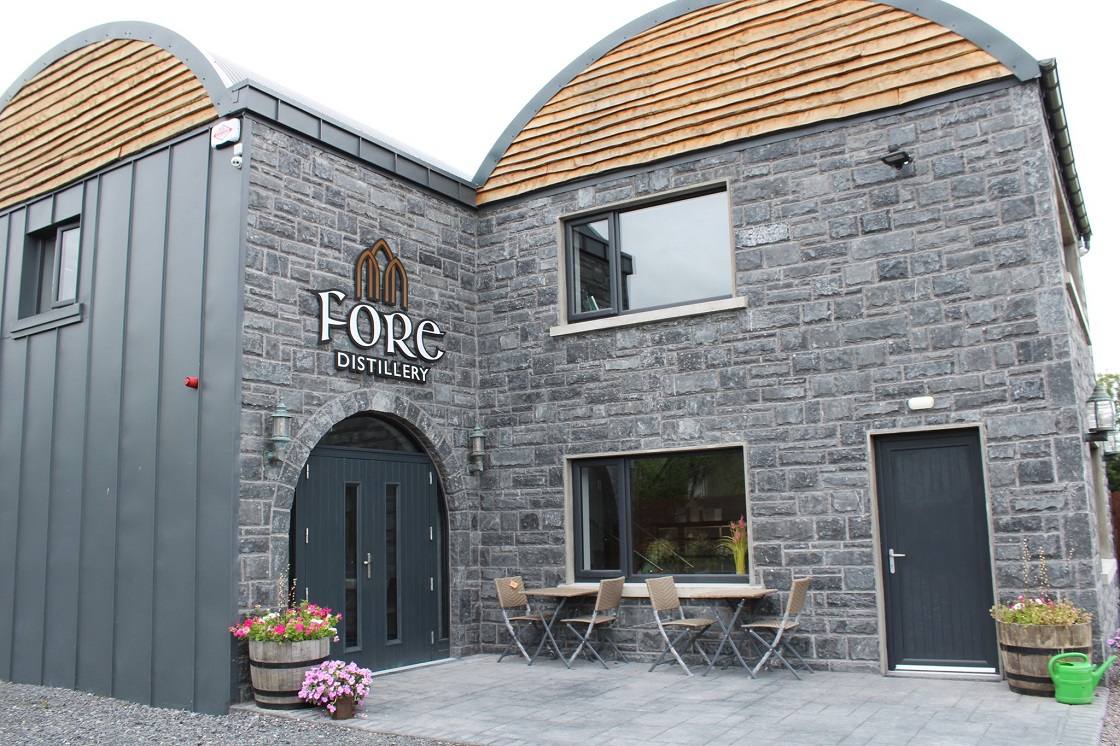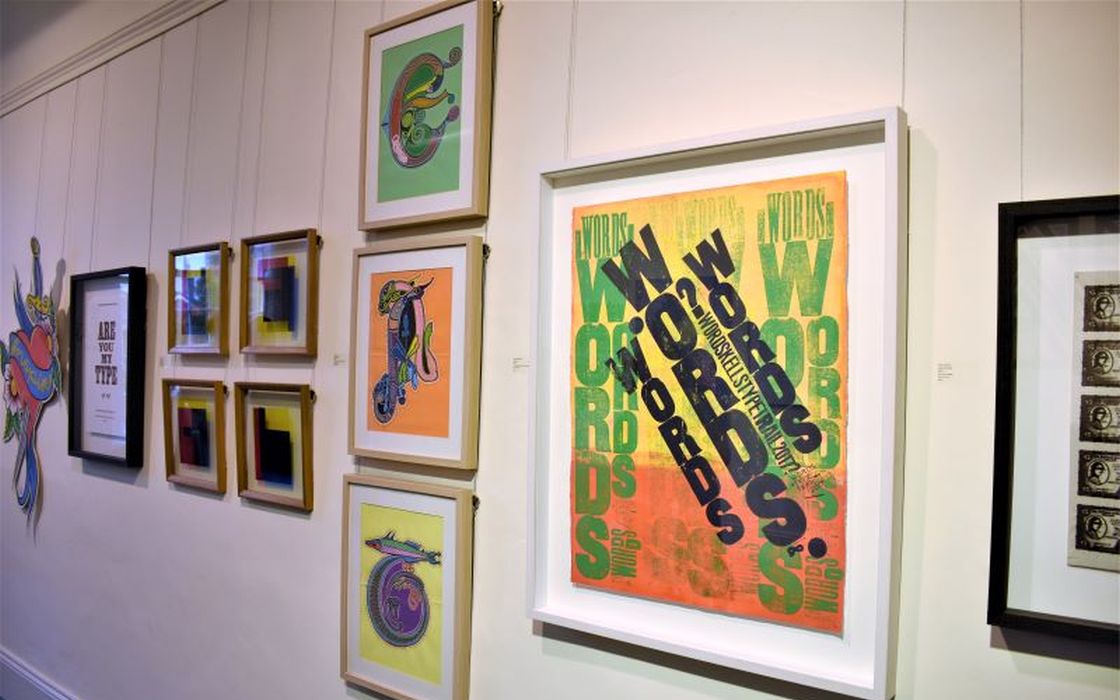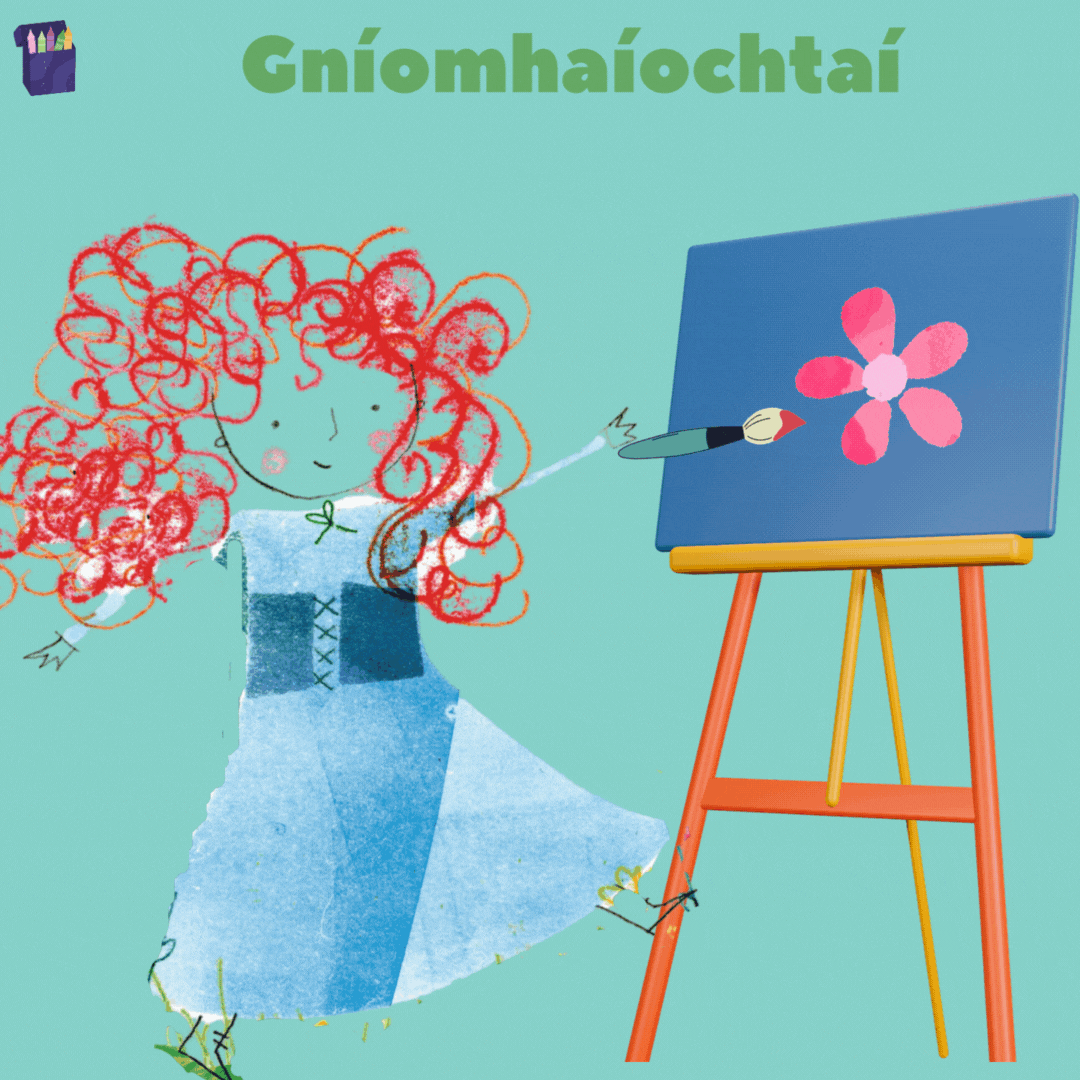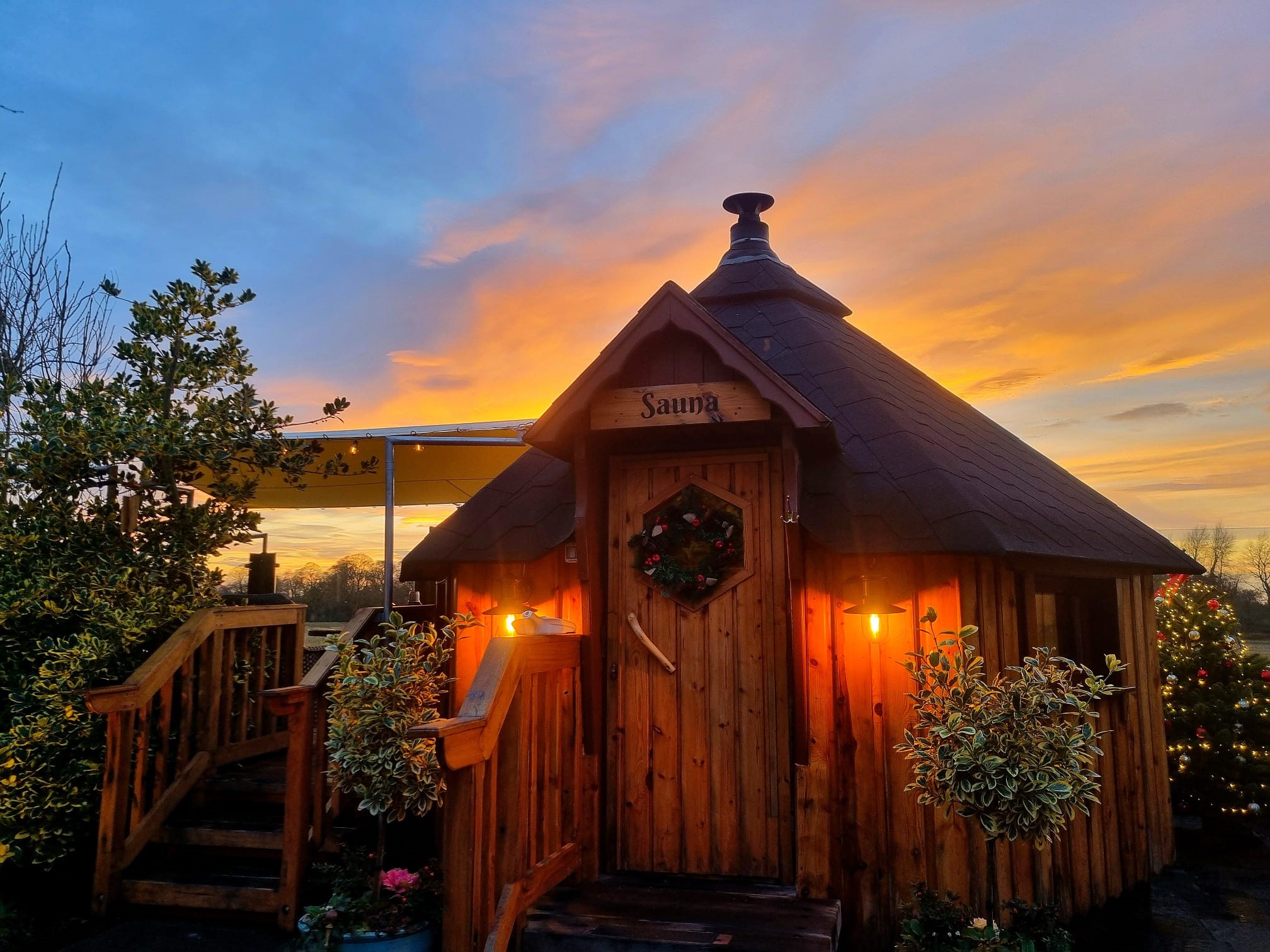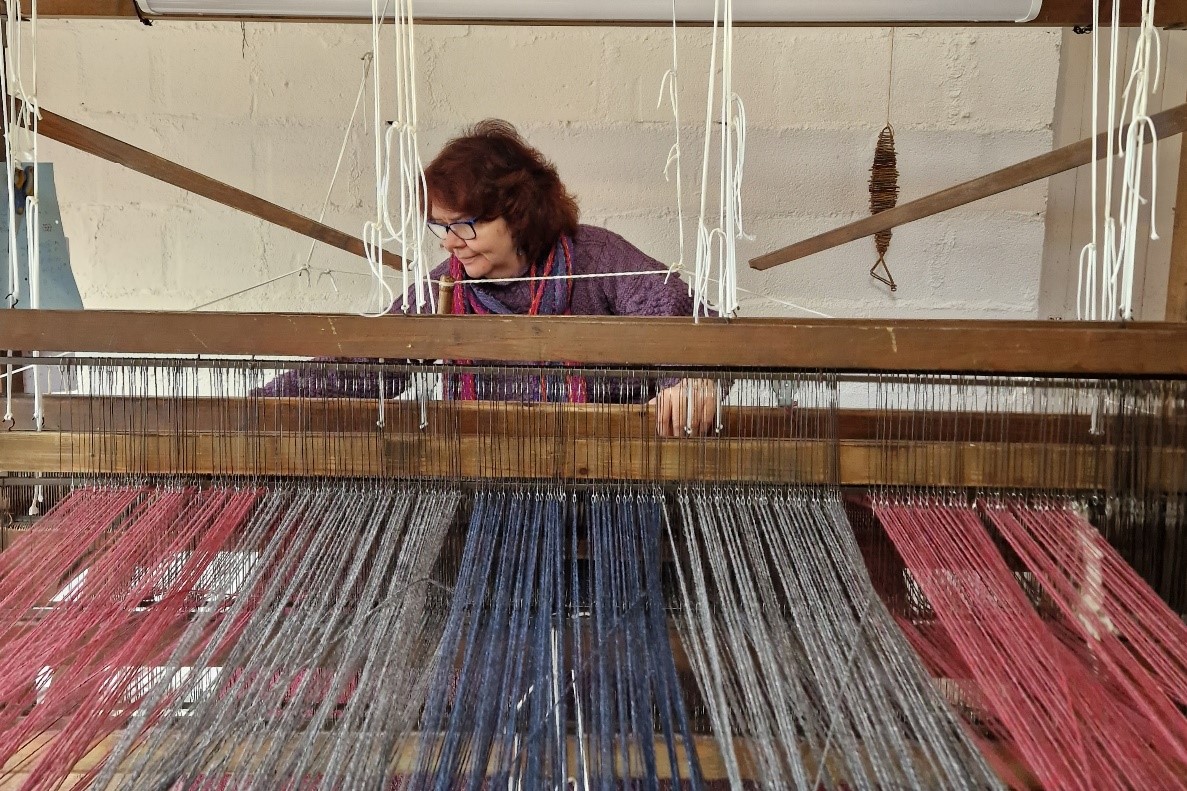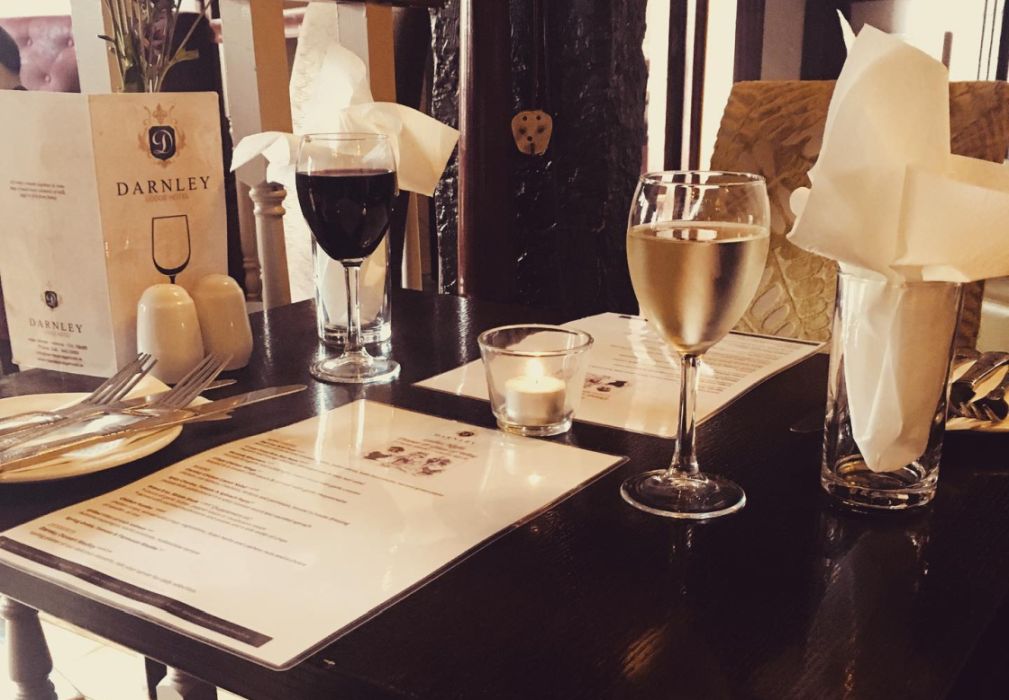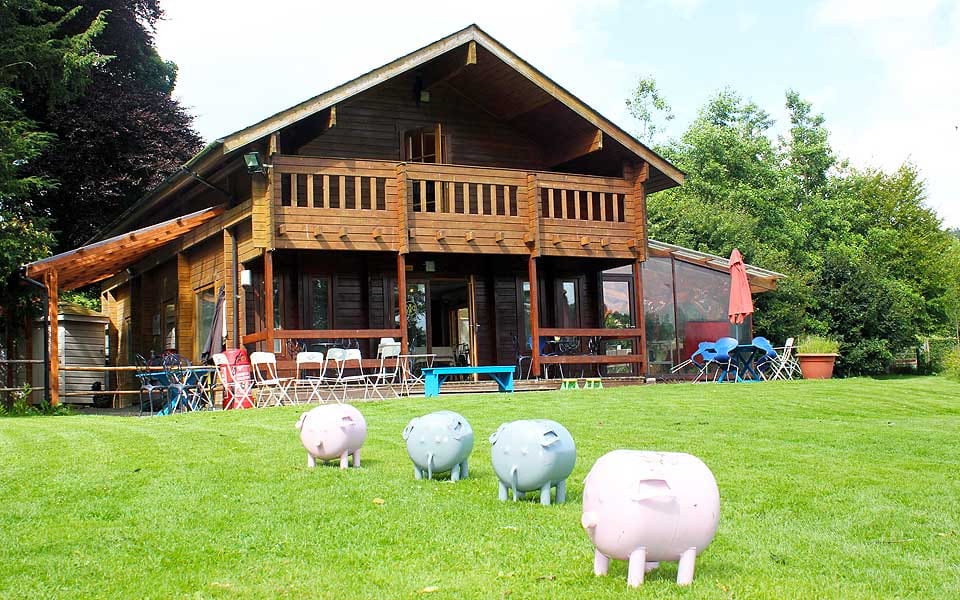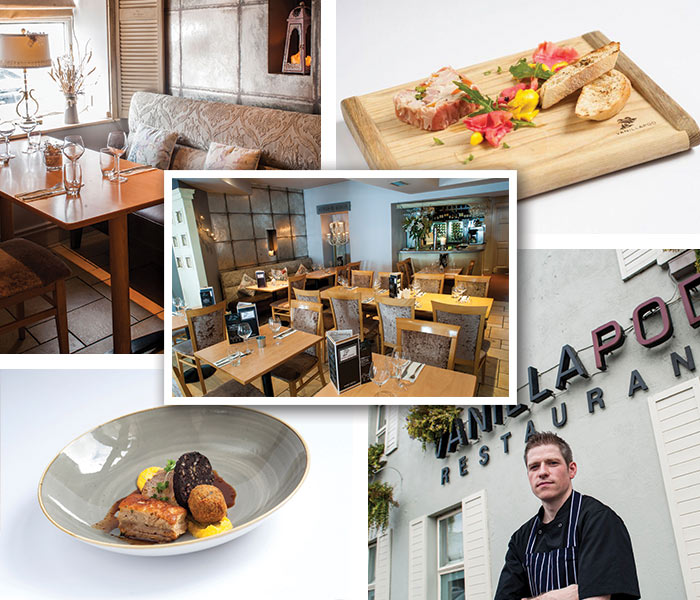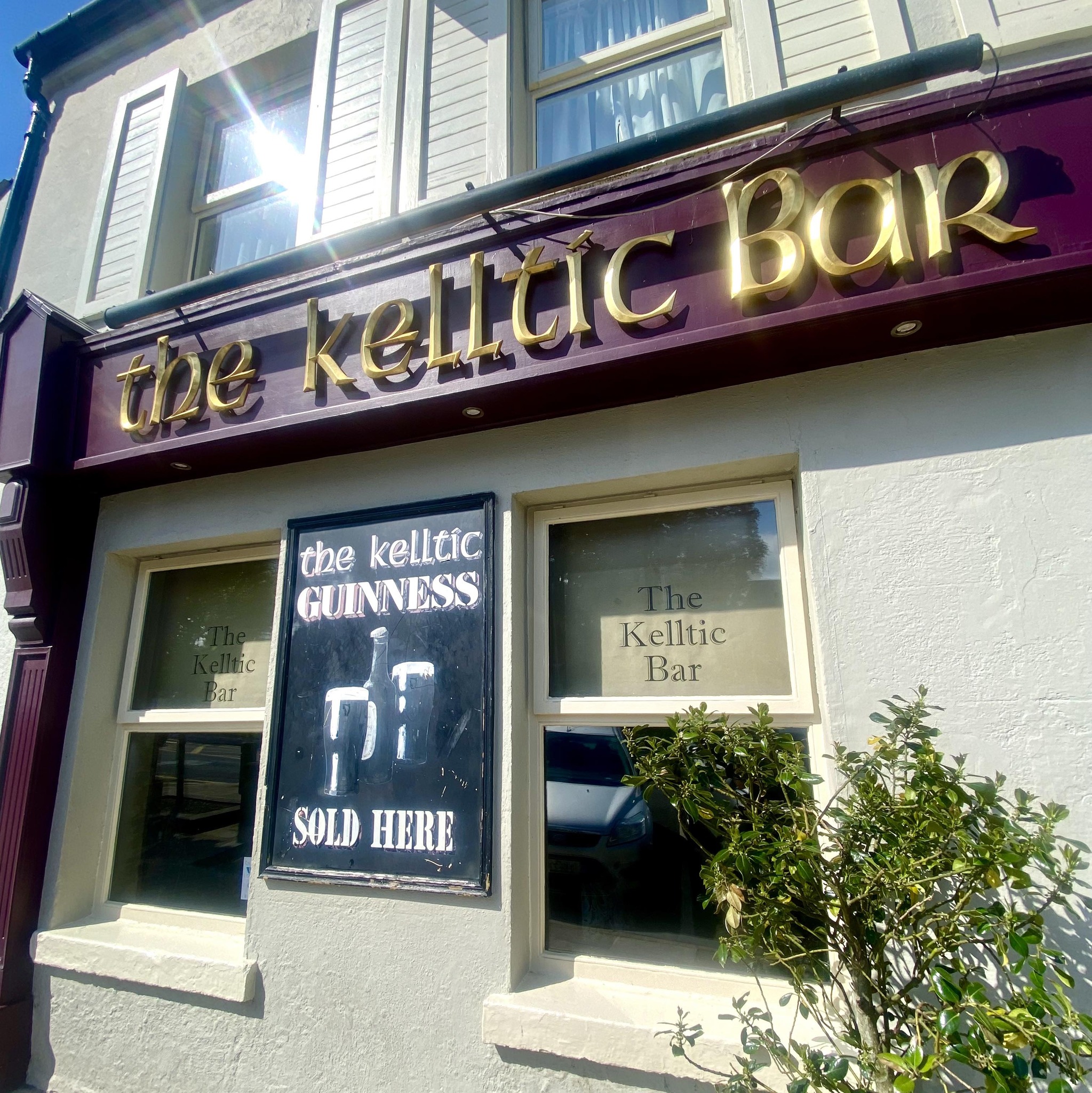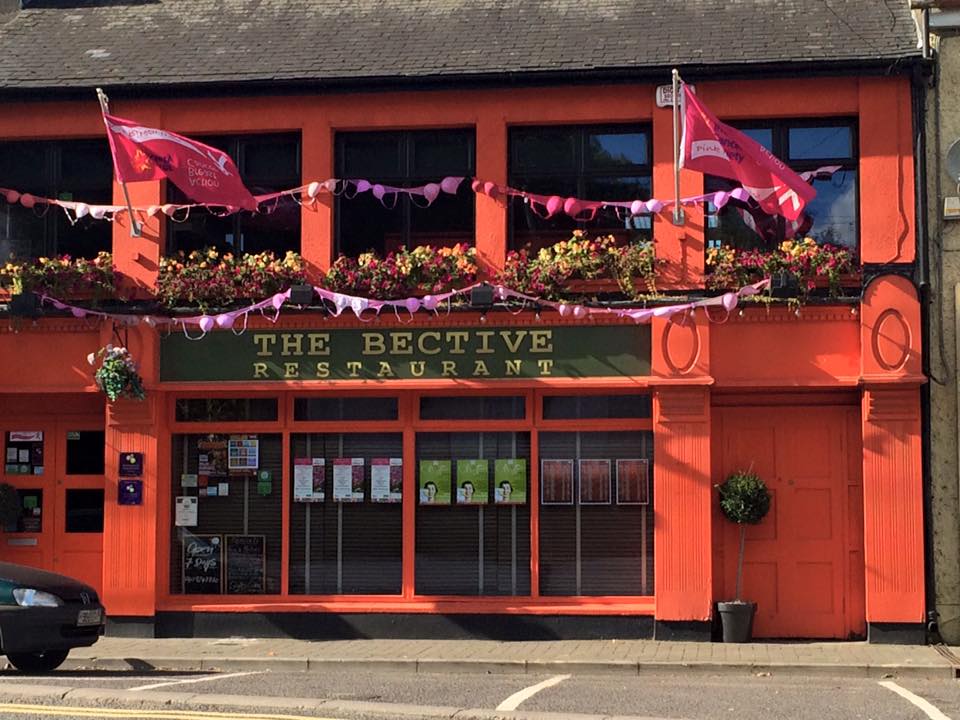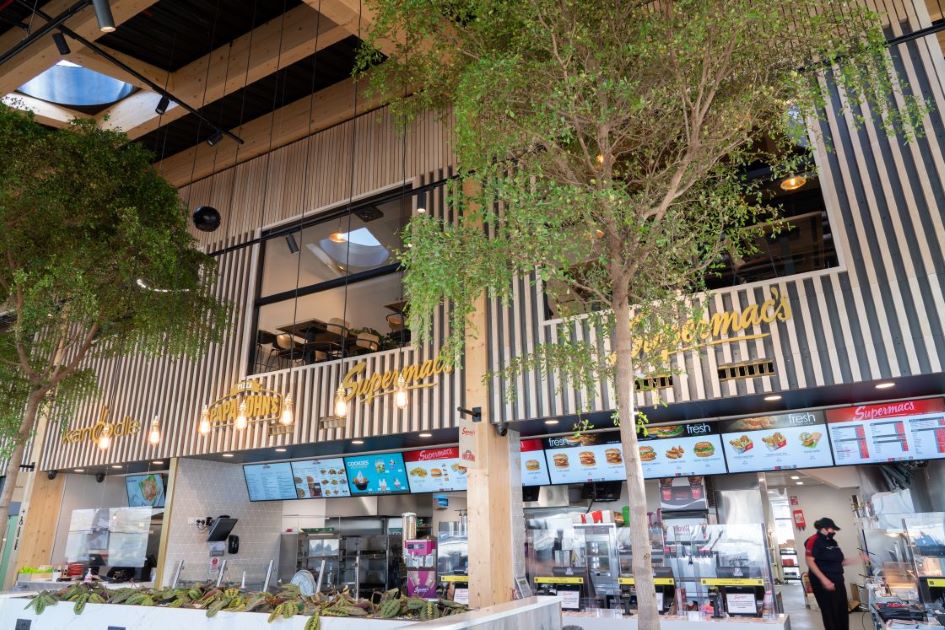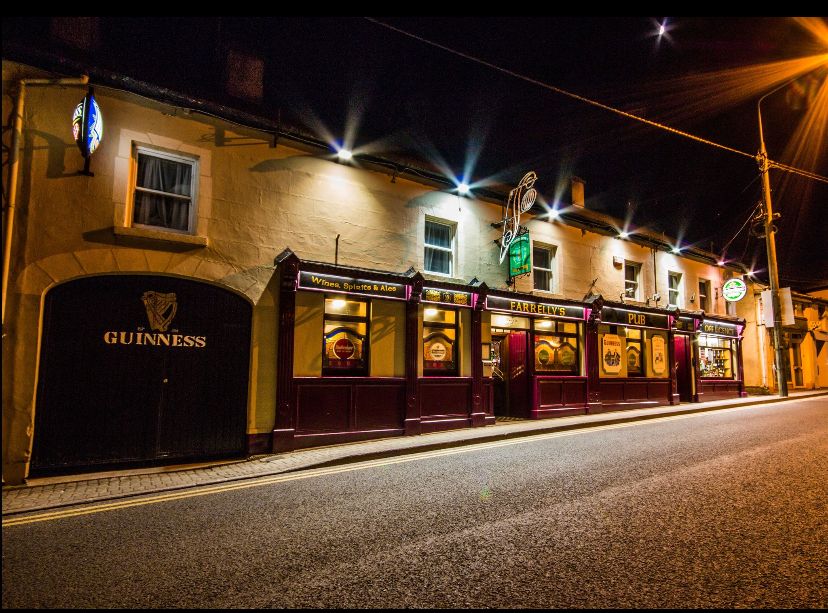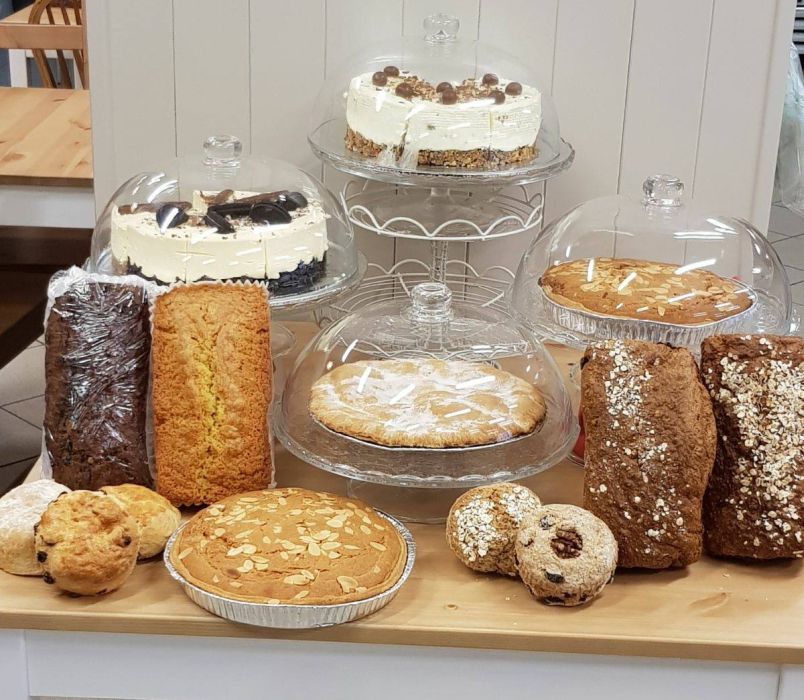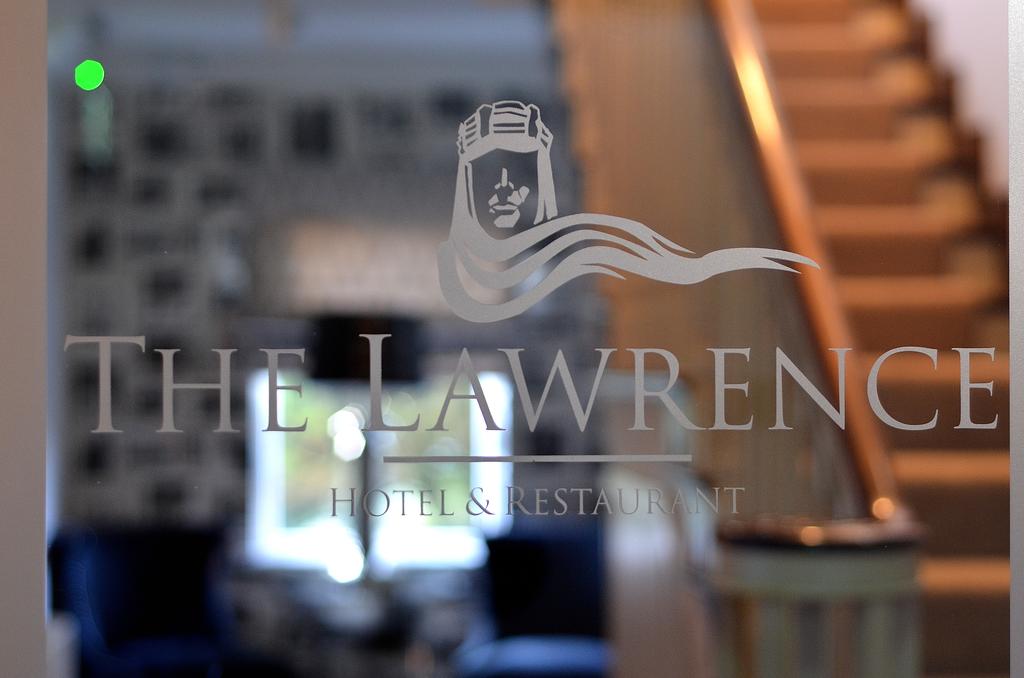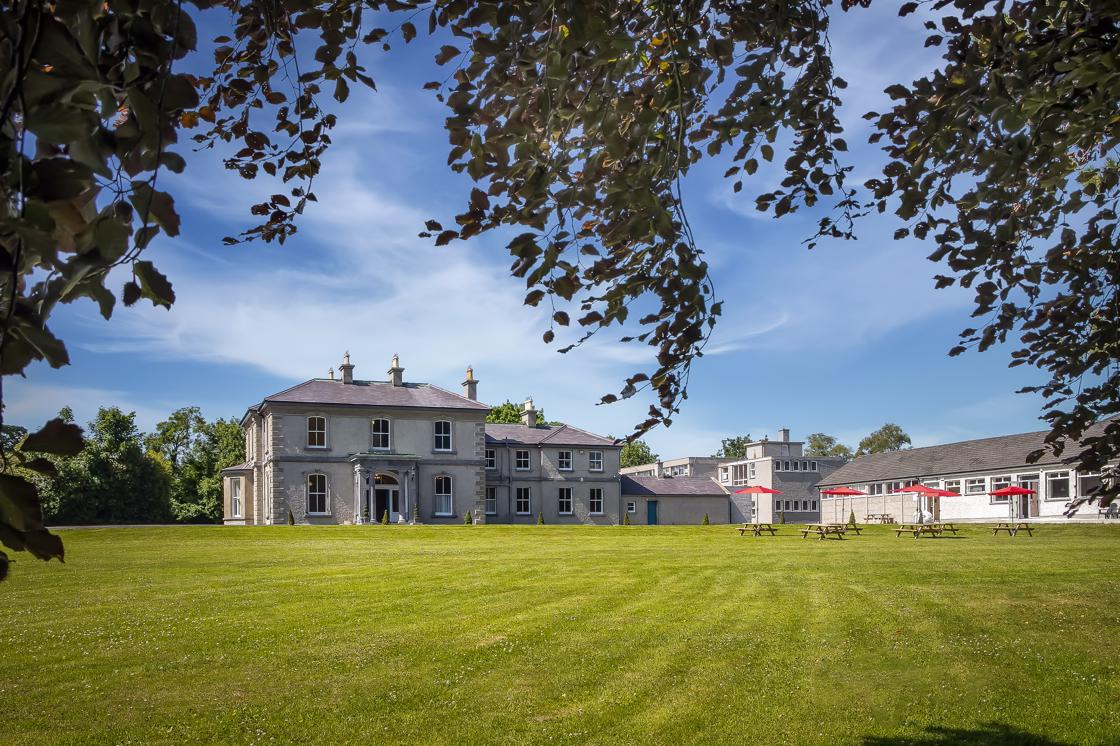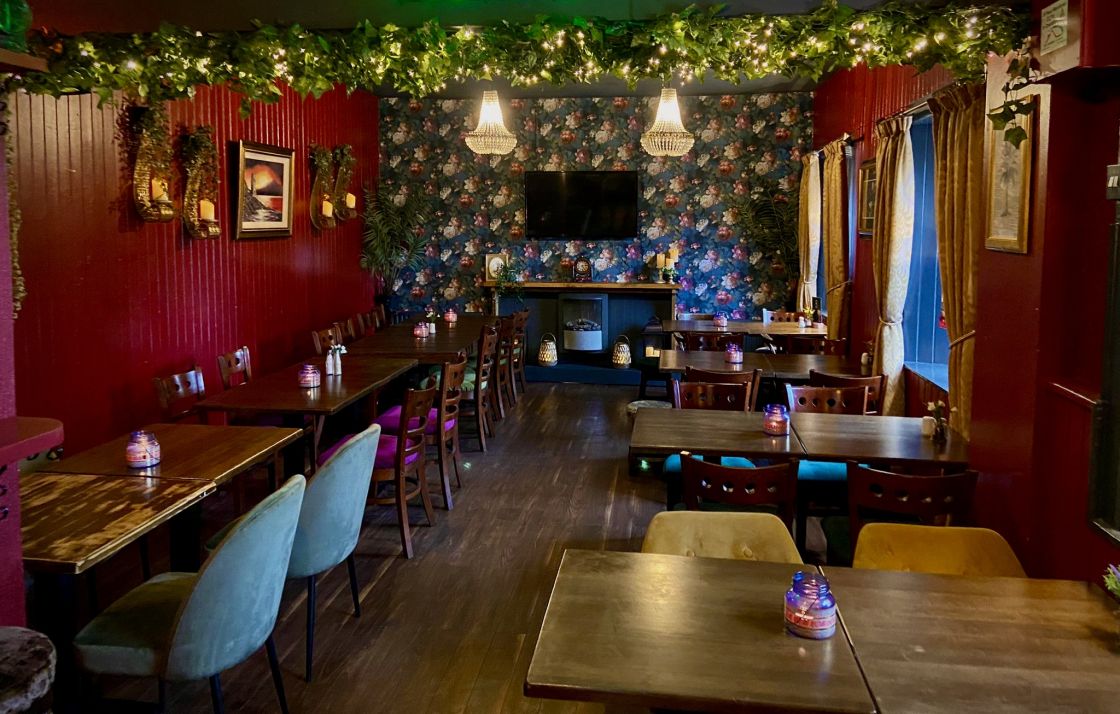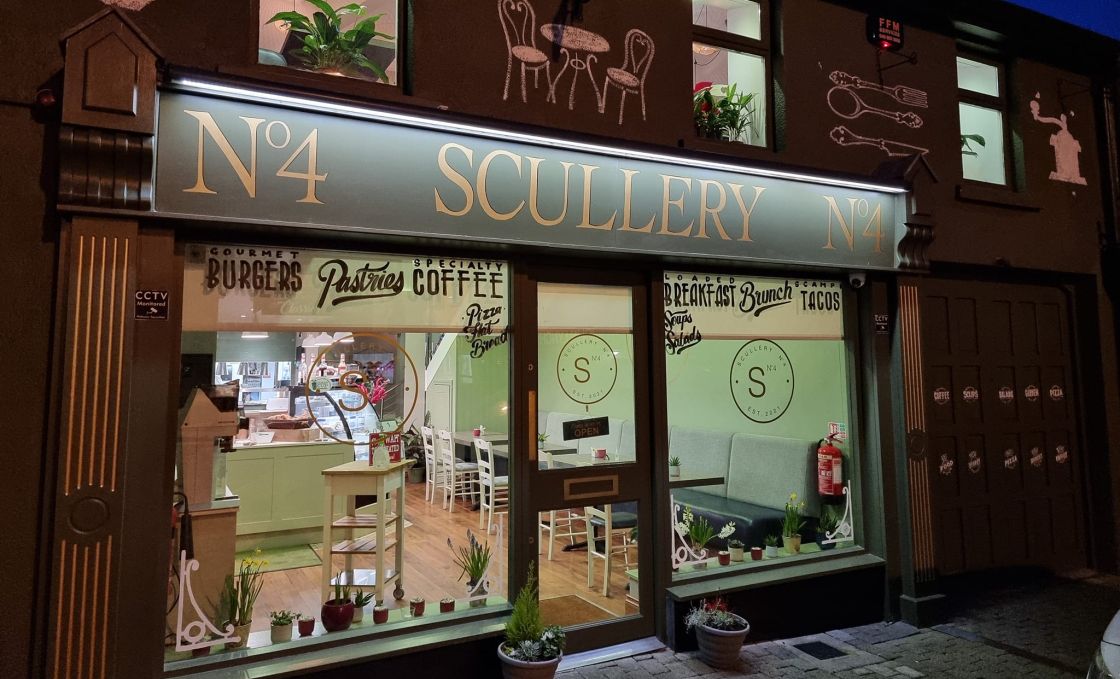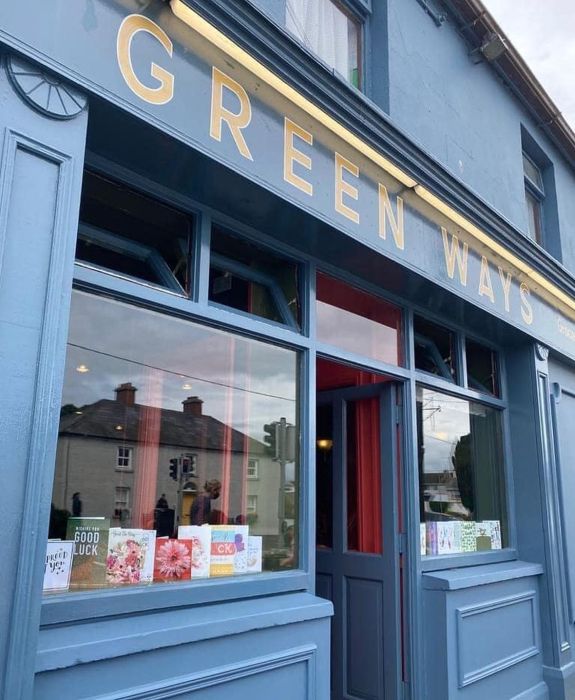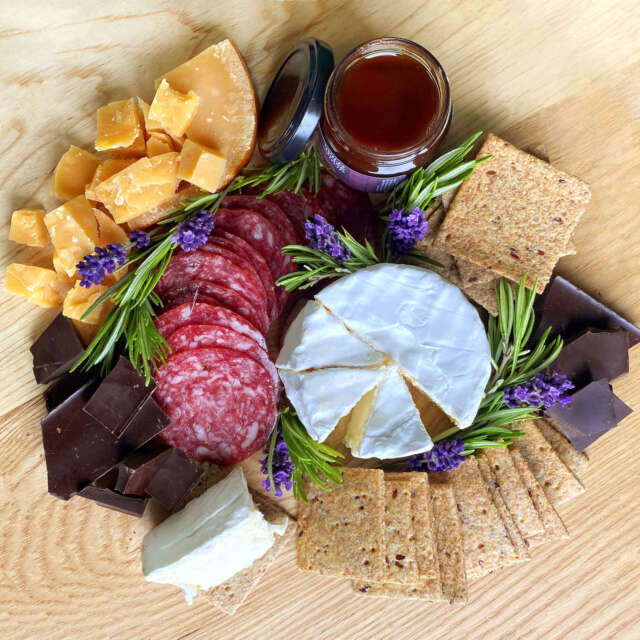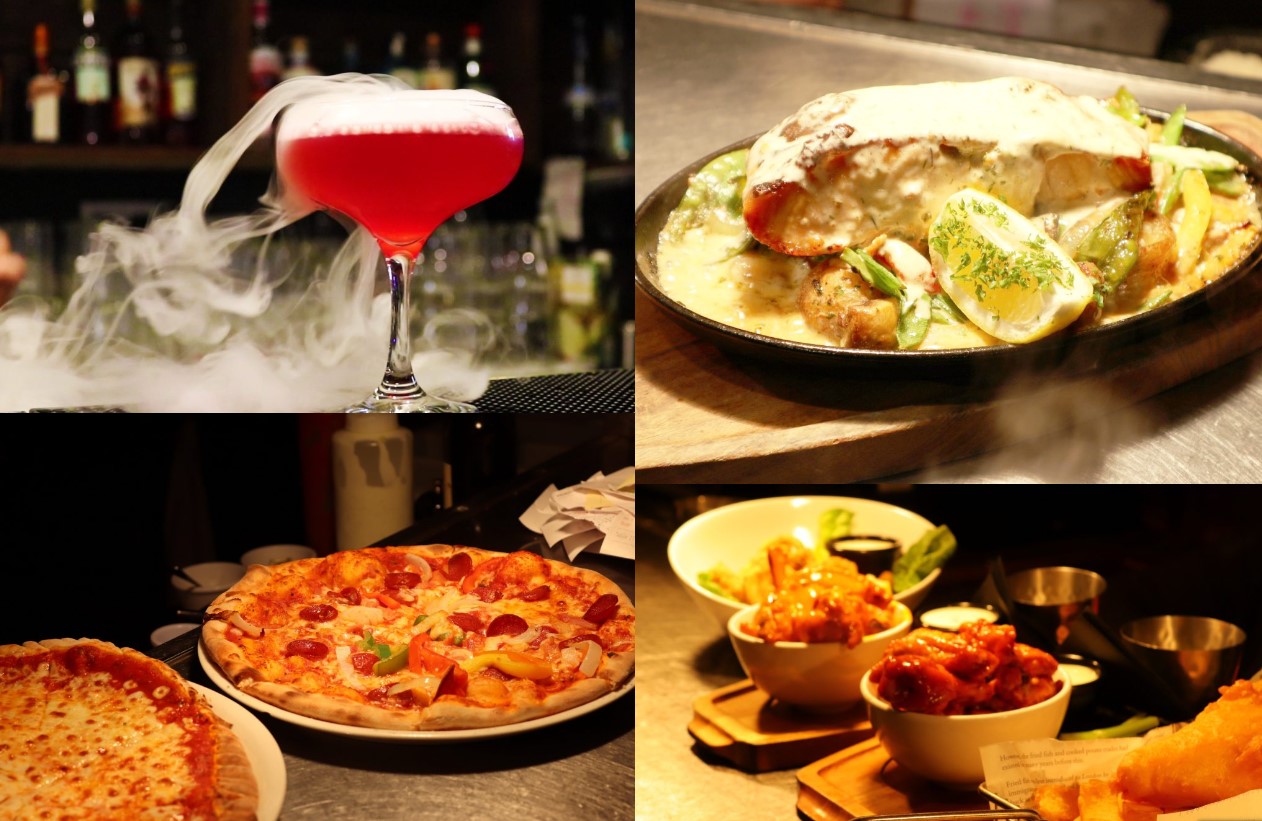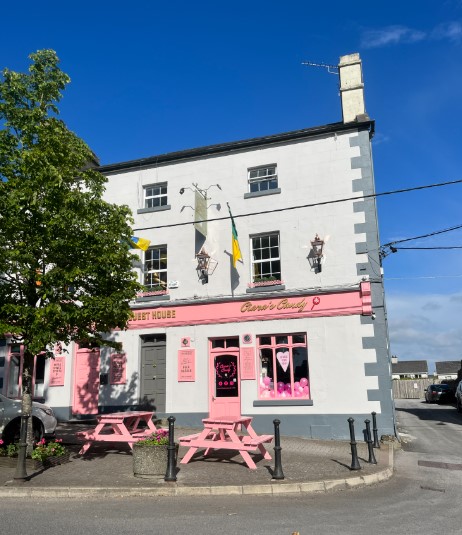The heritage town of Kells contains many fine examples of early medieval Christian architecture.
Kells derives from the Irish Ceanannas Mór, meaning ‘great residence`. Long before the coming of Christianity, Kells was a royal residence associated with the legendary Conn Céadchatach (Conn of the Hundred Battles) and Cormac mac Airt. In 550 St. Columba, also known as St. Colmcille, established a religious settlement at Kells. In 563 he went into self imposed exile of the Isle of Iona, off the west coast of Scotland and founded another settlement. The island was raided by Viking fleets in 795, 802 and again in 804 when sixty-eight people were killed. Shortly after, the community of St. Columba`s monastery on Iona were granted lands at Kells as a safe haven from invaders.
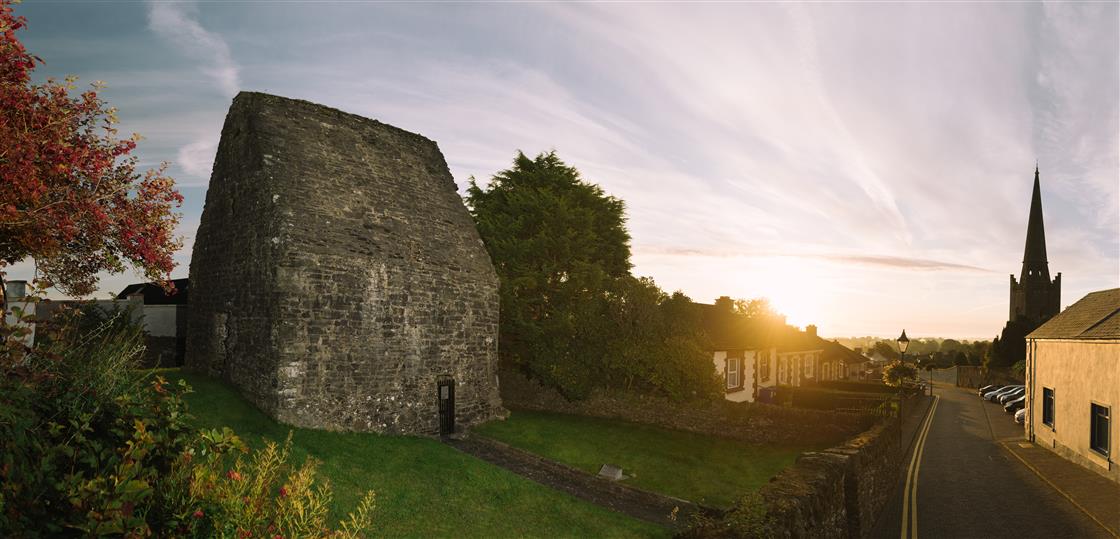
Generally, monastic settlements were surrounded by a circular boundary wall called a vallum, which acted as a frontier between the holy world within and the secular world outside. They often contained a church, graveyard, high crosses, monk`s cells and from the late 10th century round towers also became a feature.
The first church at Kells was completed by 814 and in 878 the relics of St. Columba were relocated from Iona, which was now prospering. However, Kells itself was raided by the Vikings in 919, 950 and 969, and many times throughout the 11th century, this time by the Irish. The most famous treasure created by the community of St. Columba is the Book of Kells, a highly ornate version of the four gospels in Latin. It was written around the year 800, though it remains unclear whether it was written in whole or part at Kells.

Although Kells became an important Anglo-Norman walled settlement, it is its monastic heritage that best survives. ‘Kells` round tower, though roofless, stands at height of 25m. In 1076 Murchadh Mac Flainn, who was fighting for the High Kingship of Ireland, was murdered in the tower. The tower is surrounded by several finely carved high crosses, in various states of preservation. A stone church known as St. Columba`s House, dating from the 9th century is possibly the oldest surviving structure in the town. It is a classic example of an early Irish church with a steeply pointed stone roof.
The Kells Courthouse was originally designed in 1801 by Francis Johnson, who also designed the GPO on O`Connell St. Dublin. The Market Cross of Kells, which dates from the 9th century and depicts scenes from the Old and New Testaments, can be seen at the junction of the Navan / Dublin (N3) road and the Slane road in front of the Kells Heritage Centre. Commence the Kells Historic Trail at Kells Courthouse where a map can be obtained.
Download the free Kells and District brochure
Book a Historic Walking Tour of Kells
Listen to some wonderful audio on Kells Heritage Town- part of the Boyne Valley Drive:
Fact
The Kells Crozier, dating from the late 9th or 10th century, is in the British Museum, London. In 1850 it appeared without explanation in a solicitor`s office in the English capital. A replica is held at the Kells Courthouse Tourism and Cultural Hub.
Alice Stopford Green (30 May 1847 – 28 May 1929)
Alice Sophia Amelia Stopford was born in Archdeaconry House, Kells, Co Meath, on 31st May 1847. Her father Edward Adderley Stopford was Rector of Kells and Archdeacon of Meath. His father was the Church of Ireland Archbishop of Meath. Alice was educated at home and after the death of her father the family moved to London. From 1874 to 1877 she lived in London where she met and married the historian John Richard Green. He died in 1883. She had become collaborator in his work as an historian. Her first book Town Life in the Fifteenth Century was published in 1894. John Morley published her first historical work Henry II in 1888.
In the 1890s she became interested in Irish history and the nationalist movement. She was vocal in her opposition to English colonial policy in South Africa during the Boer War and supported Sir Roger Casement's Congo Reform movement. Her 1908 book The Making of Ireland and its Undoing argued for the sophistication and richness of the native Irish civilisation. Stopford Green was active in efforts to make the prospect of Home Rule more palatable to Ulster Unionists. She was closely involved in the Howth gun-running.
She moved to Dublin in 1918 where her house at 90 St Stephen's Green became an intellectual centre. She supported the pro-Treaty side in the Irish Civil War and was among the first nominees to the newly formed Seanad Éireann in 1922, where she served as an independent member until her death in Dublin on 28th May, 1929 aged 81.


